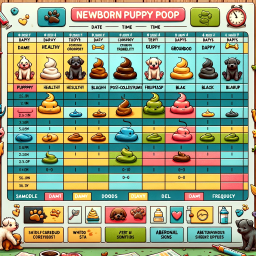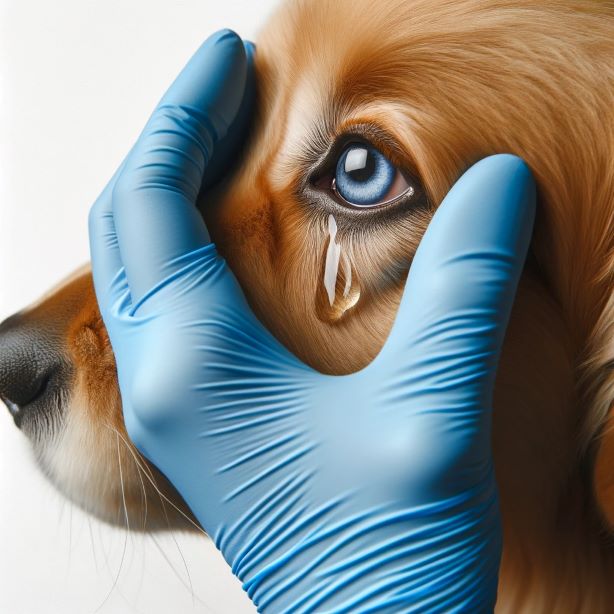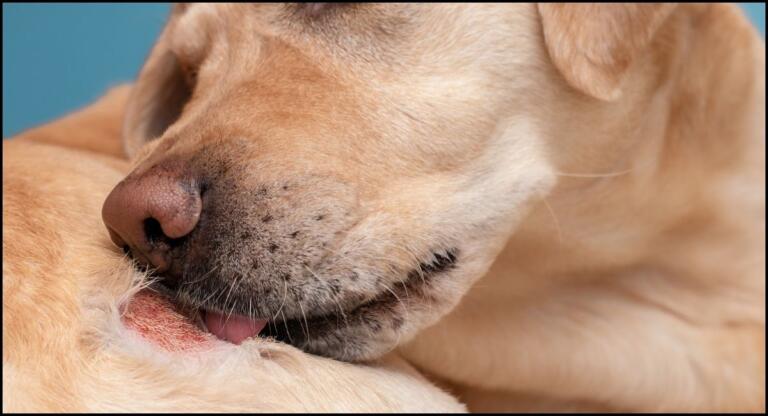Newborn Puppy Poop Chart: Decoding What Colors and Textures Mean

Newborn Puppy Poop Chart: To know it read the full article.
Welcoming a litter of newborn puppies into the world is an exciting and demanding experience.
As a new pet owner or breeder, it’s crucial to understand every aspect of their care, including something as seemingly mundane but vitally important as their poop.
Yes, puppy poop! Monitoring and understanding the characteristics of newborn puppy poop is not just about keeping their living area clean, it’s a vital part of ensuring their health and early development.
Newborn Puppy Poop Chart
A newborn puppy poop chart is a simple, yet effective tool used to record and analyze the characteristics of a puppy’s poop.
It helps in identifying potential health issues at an early stage. Regularly updating and reviewing this chart can provide insights into the puppy’s digestive health, dietary tolerance, and overall well-being.
Creating and Using a Newborn Puppy Poop Chart
Step 1: Chart Design
- Date and Time: Record the date and time of each bowel movement.
- Puppy Identification: If monitoring multiple puppies, include a way to identify each one (like a collar color or name).
- Poop Color: Have a color chart or descriptions for reference.
- Consistency: Note the consistency (e.g., firm, runny, hard).
- Frequency: Record how often the puppies are defecating.
Here is a sample design for a Newborn Puppy Poop Chart:
| Date | Time | Puppy ID | Poop Color | Consistency | Frequency |
|---|---|---|---|---|---|
| 2023-12-01 | 08:00 AM | Puppy A | Mustard Yellow | Firm | After feeding |
| 2023-12-01 | 06:00 PM | Puppy A | Mustard Yellow | Firm | After feeding |
| 2023-12-02 | 09:00 AM | Puppy B | Greenish | Firm | After feeding |
| 2023-12-02 | 05:00 PM | Puppy B | Mustard Yellow | Runny | After feeding |
| 2023-12-03 | 08:00 AM | Puppy A | Black/Tar-like | Firm | After feeding |
Step 2: Daily Monitoring and Recording
- Regular Checks: Observe and record each puppy’s bowel movements at least once a day.
- Consistency in Observations: Ensure that all caretakers use the same criteria for recording.
Step 3: Understanding Poop Characteristics
- Color Indicators: Yellowish-mustard is normal for breastfed puppies; greenish hues may appear after the consumption of colostrum; black or tar-like poop is normal initially; white, gray, or red shades can be warning signs.
- Consistency Indicators: Firm is ideal; watery or hard stools can indicate dietary issues or health problems.
- Frequency Trends: Newborn puppies typically poop after each feeding. Deviations from this pattern may require attention.
Step 4: Identifying Red Flags
- Persistent Diarrhea or Constipation: These can be signs of serious health issues.
- Sudden Changes in Poop Characteristics: Any abrupt change can be a cause for concern.
Step 5: Addressing Abnormal Findings
- Consult a Veterinarian: Any persistent or concerning changes should be discussed with a veterinarian.
- Dietary Adjustments: Based on veterinary advice, adjust the feeding regimen or the mother’s diet.
- Hydration and Care: Ensure the puppies are well-hydrated and comfortable.
The Role of a Balanced Diet in Puppy Poop Health
Ensuring that the mother is on a healthy, balanced diet is crucial, as this directly affects the quality of her milk and, consequently, the puppies’ poop health. Supplements and dietary adjustments should only be made under veterinary guidance.
Normal vs. Abnormal Poop in Newborn Puppies
Here’s a table analyzing the key differences between normal and abnormal poop in newborn puppies, along with their possible health implications:
| Indicator | Normal | Abnormal | Possible Implications of Abnormal |
|---|---|---|---|
| Color | Mustard Yellow (Breastfed), Black/Tar-like (First few days) | White, Gray, Red/Blood-tinged | Liver issues, Internal bleeding or Gastrointestinal problems |
| Consistency | Firm | Watery/Diarrhea, Hard/Pellet-like | Infection, Dietary problems, Dehydration |
| Frequency | After each feeding | Less frequent than feeding, Too frequent | Insufficient feeding, Dietary issues |
Feeding and Its Impact on Newborn Puppy Poop
In the initial weeks, a puppy’s primary food source is the mother’s milk. This milk is perfectly formulated to meet all the nutritional needs of newborn puppies, containing essential antibodies, nutrients, and the right balance of fats, proteins, and carbohydrates.
Impact on Poop
- Color: The first few days of life, the poop is typically black or tar-like, indicating the passage of meconium. After this, it generally becomes mustard yellow, a sign of healthy digestion of maternal milk.
- Consistency: The consistency of poop in puppies feeding on maternal milk is generally firm, indicating healthy digestion.
- Frequency: Healthy puppies will usually defecate shortly after each feeding.
Supplementary Feeding and Its Effects
There are circumstances where supplemental feeding is necessary – for example, if the mother has insufficient milk or is unable to feed her puppies. Puppy formula is often used in these cases.
Changes in Poop Due to Supplemental Feeding
- Formula-fed Puppies: Puppies fed with formula might exhibit slight changes in poop color and consistency. It may be firmer or slightly different in color compared to those fed exclusively on maternal milk.
- Introduction of Solid Foods: As puppies grow and start consuming solid foods, their poop will change in consistency and become more like adult dog feces.
Common Feeding-Related Issues and Poop Changes
- Overfeeding: Can lead to diarrhea or overly soft stools.
- Underfeeding: May result in less frequent or hard, pellet-like stools, indicating constipation or dehydration.
- Dietary Intolerances: Certain ingredients in puppy formula or solid food might not suit some puppies, leading to diarrhea or changes in poop color.
The Significance of Consistent Feeding Schedules
A consistent feeding schedule aids in regular bowel movements. Irregular feeding can cause stress in puppies, reflected in their bowel habits.
When to Seek Veterinary Advice
Any persistent or concerning changes in a puppy’s poop, particularly those that are not resolved by dietary adjustments, should be discussed with a veterinarian. This is especially important for very young or weak puppies who are more vulnerable to health issues.
Common dog Poop-Related Issues and Treatments
A critical aspect of monitoring their health is through observing their poop, as changes in its appearance can often be the first sign of health issues. This article focuses on common poop-related issues in newborn puppies, their potential causes, and suggested treatments.
1. Diarrhea
Causes:
- Infections: Viral or bacterial infections can cause diarrhea.
- Dietary Changes: Abrupt changes in diet or the mother’s diet can affect the puppies.
- Stress: Environmental changes or weaning can lead to stress-induced diarrhea.
Treatment:
- Hydration: Ensure the puppy stays hydrated. In severe cases, intravenous fluids may be needed.
- Diet Adjustment: Feeding easily digestible food can help. Consult a veterinarian for specific dietary recommendations.
- Veterinary Care: If diarrhea persists, a vet may prescribe medications or additional treatments.
2. Constipation
Causes:
- Dehydration: Lack of adequate fluid intake can lead to constipation.
- Dietary Issues: Inadequate fiber or a change in diet.
- Lack of Exercise: Limited physical activity can contribute to constipation.
Treatment:
- Hydration: Increase fluid intake.
- Dietary Fiber: Introduce high-fiber foods gradually.
- Gentle Exercise: Encourage light activity.
- Veterinary Intervention: If symptoms persist, consult a vet for possible laxatives or enemas.
3. Parasites
Causes:
- Worms: Puppies can be born with worms or contract them from their environment.
- Protozoan Infections: Such as Giardia or Coccidia.
Treatment:
- Deworming Medications: Administered under veterinary supervision.
- Hygienic Practices: Maintaining a clean environment to prevent reinfection.
4. Dietary Intolerance
Causes:
- Formula Ingredients: Some puppies may react to certain ingredients in puppy formula.
- Solid Foods: Sensitivities can develop as puppies start on solid foods.
Treatment:
- Dietary Adjustment: Identify and eliminate the offending ingredient.
- Gradual Introduction of New Foods: Introduce new foods slowly and one at a time.
5. Color Changes
- Black or Tar-like Stools: Normal in the first few days.
- White or Gray Stools: Could indicate a liver or biliary issue.
- Red or Blood-tinged Stools: May signal internal bleeding or a gastrointestinal problem.
Treatment:
- Veterinary Examination: Color changes often require professional diagnosis and treatment.
Prevention and General Care
- Regular Monitoring: Keep a close eye on the puppies’ bowel movements.
- Proper Diet: Ensure the mother and puppies are on a healthy diet.
- Clean Environment: Maintain cleanliness to prevent infections.
- Regular Veterinary Check-ups: Essential for early detection and treatment of issues.
Dealing with Diarrhea in Newborn Puppies
Diarrhea in newborn puppies manifests as loose, watery, or liquid stools. It can be caused by a variety of factors including dietary changes, infections, stress, or more serious health issues. Recognizing the signs of diarrhea early, often through a poop chart, is key to preventing complications such as dehydration and malnutrition.
The Role of the Poop Chart in Identifying Diarrhea
What to Look For
- Consistency: Record any changes from firm to loose or watery stools.
- Frequency: Note if the puppy is defecating more frequently than normal.
- Color: Pay attention to color changes that may accompany diarrhea, like unusual shades or blood.
Benefits of the Chart
- Early Detection: Helps in identifying diarrhea at its onset.
- Tracking Progress: Useful in monitoring the puppy’s response to treatment.
- Communicating with Veterinarians: Provides a detailed record to share with a vet during consultations.
Causes of Diarrhea in Newborn Puppies
- Dietary Issues: Overfeeding, improper feeding, or sudden changes in diet.
- Infections: Viral, bacterial, or parasitic infections.
- Environmental Stress: Changes in environment or early weaning.
Treating Diarrhea in Newborn Puppies
Immediate Actions
- Hydration: Ensure the puppy stays hydrated; consult a vet for advice on rehydration solutions if needed.
- Dietary Management: Feed easily digestible, bland food as recommended by a vet.
Veterinary Care
- Diagnosis: A vet may conduct tests to determine the cause of diarrhea.
- Treatment: Depending on the cause, treatment may include antibiotics, probiotics, or other medications.
Preventative Measures
- Proper Feeding: Follow guidelines for feeding newborn puppies.
- Clean Environment: Maintain hygiene to prevent infections.
- Regular Check-ups: Ensure the puppies receive routine veterinary care.
Monitoring and Follow-Up
- Continued Use of the Poop Chart: Keep using the chart to track progress and any recurrence.
- Observation: Watch for signs of recovery or worsening of symptoms.
- Veterinary Follow-up: Regular check-ups to ensure complete recovery.
Practical Tips for Managing Newborn Puppy Poop and Hygiene
Newborn puppies have delicate digestive systems. Their poop can vary in color and consistency, depending on their diet and health. Regular monitoring of their poop provides valuable insights into their well-being.
Setting Up a Clean Environment
Choosing the Right Space
- Easy-to-Clean Area: Opt for a space with flooring that is easy to clean and disinfect, such as tile or linoleum.
- Containment: Use a whelping box or a designated area to contain the puppies and their messes.
Bedding
- Absorbent and Washable Bedding: Use bedding that is absorbent and easy to wash. Change bedding frequently to maintain cleanliness.
Hygiene Practices
Regular Cleaning
- Spot Cleaning: Clean up poop immediately to prevent the spread of bacteria and odors.
- Daily Disinfection: Use pet-safe disinfectants to clean the puppies’ area daily.
Hand Hygiene
- Wash Hands: Always wash your hands before and after handling the puppies to prevent the spread of germs.
Managing Poop
Using a Poop Chart
- Keeping a poop chart helps track each puppy’s bowel movements, aiding in early detection of health issues.
Disposal
- Proper Disposal: Dispose of puppy poop promptly and safely. Use biodegradable bags or a designated waste bin.
Feeding and Its Impact on Poop
- Consistent Feeding Schedule: Feed the mother and puppies at regular intervals to regulate bowel movements.
- Quality Diet: Ensure the mother and puppies are on a high-quality diet to promote healthy digestion.
Health Monitoring
- Regular Vet Visits: Regular check-ups with a vet can ensure the puppies are healthy and receiving proper nutrition.
- Watch for Signs of Illness: Be alert to changes in poop consistency, color, or frequency, which can indicate health issues.
Bathing and Grooming
- Gentle Cleaning: Use a damp cloth or puppy wipes to gently clean the puppies’ bottoms if they get dirty.
- Avoid Frequent Baths: Puppies should not be bathed frequently, but keeping their immediate area clean will help maintain their hygiene.
Educating Yourself
- Learn about Puppy Care: Educate yourself on the best practices for raising healthy puppies, including hygiene management.
- Consult with Professionals: Don’t hesitate to seek advice from veterinarians or experienced breeders.
Conclusion
The use of a newborn puppy poop chart is an invaluable practice for anyone responsible for the care of these young animals. This simple yet effective tool transcends being merely a record of bowel movements; it’s a window into the health and well-being of newborn puppies. By meticulously tracking the color, consistency, and frequency of each puppy’s poop, caregivers can gain early insights into potential health issues, dietary adjustments, and overall growth patterns.
The importance of such vigilance cannot be overstated. In the delicate early stages of a puppy’s life, even minor changes in health can have significant consequences. A poop chart serves as an early warning system, enabling prompt intervention and care. It also fosters a deeper understanding and connection between the caregiver and the puppies, as it requires close observation and attention to their daily needs.
Related Posts:
Read More: Why Does My Dog Open His Mouth When I Pet Him? 7 Reasons
Read More: Why Does My Dog Keep Sniffing My Legs: 5 Common Reasons
Read More: Why Does My Dog Bite Me In The Morning? 2 Way To safe From
Read More: Why Are My Dogs Balls Black? Best Number 1 Answer
Read More: Why Do Dogs Like Peanut Butter?
Read More: Why Does My Dog Nibble My Ear? 10 Reasons
Read More: Why Does My Dog Move Its Bed Around?
Read More: Why Does My Dog Bring Me His Food?
Read More: Why Does My Dog Lay His Head Over My Neck? 7 Reasons





